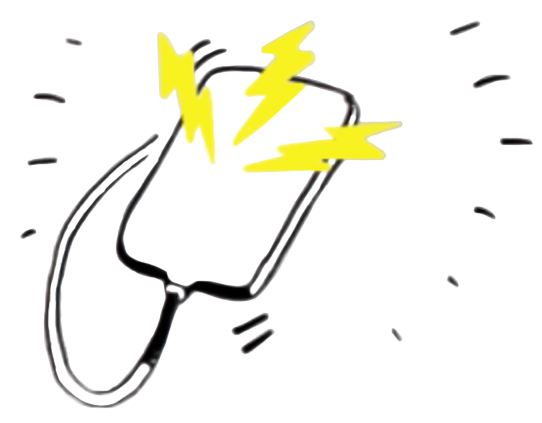-
Healthcare Professionals
-
Therapies and Procedures
-
Concomitant Surgical Ablation Therapy
- Ablation Sensing Unit & Switch Matrix
- cryoFORM® Cryoablation Probe
- cryoICE® BOX V6
- cryoICE® Cryoablation Probes
- Isolator® Linear Pen
- Isolator® Synergy™ Access® Clamp
- Isolator® Synergy™ Clamps (OLL2/OSL2)
- Isolator® Transpolar Pen (MAX3)
- Isolator® Synergy™ EnCompass® Clamp
- Multifunctional Ablation Generator (MAG)
- Hybrid AF™ Therapy
- Hybrid Total Thoracoscopic Therapy
- Left Atrial Appendage Management
- Cryo Nerve Block Therapy
-
Concomitant Surgical Ablation Therapy
- Education & Training
- Clinical Evidence
- Product Labeling
- Resources
- Society Guidelines
-
Therapies and Procedures
- Patients & Caregivers
- About AtriCure
Cardioversion for Atrial Fibrillation Treatment
Atrial fibrillation is a progressive disease, so it requires treatment. Cardioversion is one type of atrial fibrillation treatment.
Electrical Cardioversion to Treat Atrial Fibrillation
This is a procedure to stop the atrial fibrillation and restore a normal heart rhythm. Cardioversion delivers one or more low-energy shocks to the outside of the chest. Sometimes a higher energy shock is needed.
Most of the electrical shock is absorbed by the chest. But some of it travels to the heart.
The shocks briefly stop all electrical activity of the heart. This allows the normal heart rhythm to resume.
Cardioversion is usually scheduled in advance. But if you have severe symptoms, you may have an emergency cardioversion at the hospital.
Research shows that cardioversion is about 90% effective at stopping the atrial fibrillation and restoring a normal heart rhythm. However, for many people, atrial fibrillation will return.1
The chances of success are lower when:
• The atrial fibrillation has been present for more than several months—called persistent atrial fibrillation1,2
• The left atrium is enlarged1,3
• The mitral valve (between the left atrium and ventricle) is thickened3
• The patient has obstructive sleep apnea4
• There is a faster heart rate in the ventricles2
• The patient has high blood pressure5
Atrial fibrillation is most likely to recur within the first few hours after cardioversion. If you have a scheduled procedure, you might be asked to start taking an antiarrhythmic medication a few days beforehand. This medication, for rhythm control, can improve the chances of success.1
You will be asked not to eat or drink anything for about 8 hours before your procedure. You also should not put any powder, lotions, or ointments on your chest and back for 24 hours before the procedure. The energy is delivered better when there is nothing on your skin.
A cardioversion is done in a hospital or clinic. Large electrode pads, or paddles, are put on your chest and your back. They have sensors to record your heart rhythm, and they also deliver the electrical shock. Wires connect the electrodes or paddles to a machine that delivers energy.
You will get an IV (intravenous) line in your forearm or hand. Through the IV, you’ll receive a medication that will make you sleep. Your health care provider will deliver the shocks to restore a normal rhythm. Because you will be asleep, you won’t feel any pain.
The procedure takes only a few minutes. But you will need to be in the hospital for a few hours both before and after. Afterwards, health care providers will be checking your heart rhythm and blood pressure.
You will usually go home the same day. You’ll need someone to drive you home. You’ll also need to take it easy for the rest of the day.
The most common side effect is skin irritation where the electrodes or paddles were placed. There are risks from cardioversion, though they don’t occur often:
• Faster heart rhythms might occur, which would also need treatment.
• Blood clots might travel to parts of the body and possibly cause a stroke. This risk is lessened if you take blood-thinning medications before and after cardioversion.
Page References
1. Knight, B.P. (2020, February 5). Patient education: cardioversion. https://www.uptodate.com/contents/cardioversion-beyond-the-basics
2. Hellman, T., Kiviniemi, T., Vasankari, T., Nuotio, I., Biancari, F., Bah, A., Hartikainen, J., Mäkäräinen, M., Airaksinen, K.E.J. (2017). Prediction of ineffective elective cardioversion of atrial fibrillation: a retrospective multi-center patient cohort study. BMC cardiovascular disorders, 17, 33. doi: https://doi.org/10.1186/s12872-017-0470-0
3. Raitt, M.H., Volgman, A.S., Zoble, R.G., Charbonneau, L., Padder, F.A., O'Hara, G.E., Kerr, D., AFFIRM investigators. (2006). Prediction of the recurrence of atrial fibrillation after cardioversion in the Atrial Fibrillation Follow-up Investigation of Rhythm Management (AFFIRM) study. American heart journal, 151(2), 390‐396. doi:10.1016/j.ahj.2005.03.019
4. Goyal, S.K., Sharma, A. (2013). Atrial fibrillation in obstructive sleep apnea. World journal of cardiology, 5(6), 157‐163. doi:10.4330/wjc.v5.i6.157
5. Ecker, V., Knoery, C., Rushworth, G., Rudd, I., Ortner A., Begley D., Leslie, S.J. (2018). A review of factors associated with maintenance of sinus rhythm after elective electrical cardioversion for atrial fibrillation. Clinical cardiology, 41(6), 862-870. https://doi.org/10.1002/clc.22931
PM-INTL-2752B-0927-G

